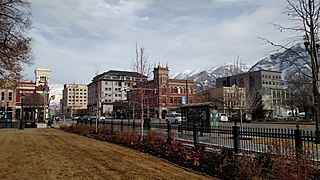
Provo is a city in and the county seat of Utah County, Utah, United States. It is 43 miles (69 km) south of Salt Lake City along the Wasatch Front, and lies between the cities of Orem to the north and Springville to the south. With a population at the 2020 census of 115,162, Provo is the fourth-largest city in Utah and the principal city in the Provo-Orem metropolitan area, which had a population of 526,810 at the 2010 census. It is Utah's second-largest metropolitan area after Salt Lake City.
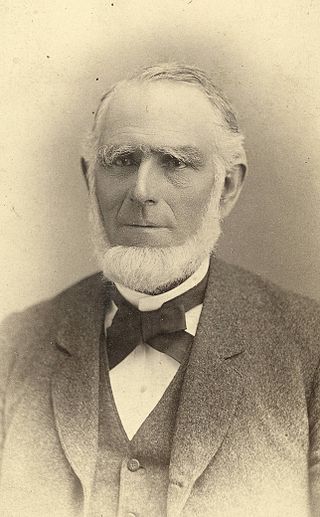
Abraham Owen Smoot was an American pioneer, businessman, religious leader, and politician. He spent his early life in the Southern United States and was one of seven children. After being baptized a member of the Church of Christ, predecessor to the Church of Jesus Christ of Latter-day Saints, Smoot served as a missionary in Kentucky, Tennessee, South Carolina, and England. He received no formal education, but learned to read as a child and later attended the School of the Prophets in Kirtland, Ohio. Like other early members of the LDS Church, Smoot practiced plural marriage, eventually marrying six women and having 24 children. After migrating west to Utah Territory, he was elected as the second mayor of Salt Lake City and maintained this position from 1857 to 1866. He was then assigned by Brigham Young to move to Provo, where he served as stake president and mayor from 1868 to 1881. He assisted financially in the construction of the Provo Tabernacle—today the Provo City Center Temple—as well as that of the Utah Southern Railroad. Smoot was the first president of the board of trustees of Brigham Young Academy (BYA)—which later developed into Brigham Young University (BYU). He was an early financial supporter of the institution and was nicknamed the "foster father" of the academy. His goal was to make education available to young Latter-day Saints. Today, the Smoot Administration Building at BYU is named after him.
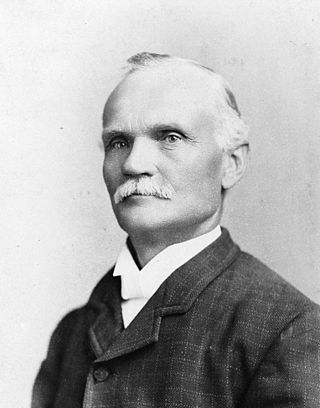
Karl Gottfried Maeser was a prominent Utah educator and a member of the Church of Jesus Christ of Latter-day Saints. He served 16 years as principal of Brigham Young Academy. Although he was not the first principal of the Academy, he is considered its founder. The Academy later became Brigham Young University (BYU) in 1903.

George Henry Brimhall was president of Brigham Young University (BYU) from 1904 to 1921. After graduating from Brigham Young Academy (BYA), Brimhall served as principal of Spanish Fork schools and then as district superintendent of Utah County schools, finally returning to BYU. In April 1904, Brimhall became president of the school, which had become BYU in October 1903. As president of BYU, Brimhall helped institute the collegiate program, departments for specific subjects, and an emphasis on religious learning.

The Spencer W. Kimball Tower, also known as the Kimball Tower or KMBL, is a 12-story building that houses classrooms and administrative offices on the Brigham Young University campus in Provo, Utah.
The history of Brigham Young University (BYU) begins in 1875, when the school was called Brigham Young Academy (BYA). The school did not reach university status until 1903, in a decision made by the school's board of trustees at the request of BYU president Benjamin Cluff. It became accredited during the tenure of Franklin S. Harris, under whom it gained national recognition as a university. A period of expansion after World War II caused the student body to grow many times in size, making BYU the largest private university of the time. The school's history is closely connected with its sponsor, The Church of Jesus Christ of Latter-day Saints.
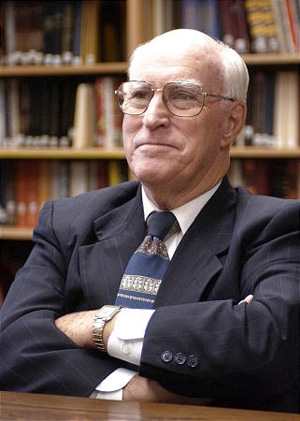
Robert James Matthews was a Latter-day Saint religious educator and scholar, teaching in the departments of Ancient Scripture and Religious Education at Brigham Young University (BYU) in Provo, Utah.
Fred Lewis Markham was an American architect in the early 20th century who designed movie theatres and many buildings on the campus of Brigham Young University (BYU) in Provo, Utah.
Arnold Kent Garr was the chair of the department of Church History and Doctrine at Brigham Young University (BYU) from 2006 to 2009. He was also the lead editor of the Encyclopedia of Latter-day Saint History.
James Brown Allen is an American historian of Mormonism and was an official Assistant Church Historian of the Church of Jesus Christ of Latter-day Saints from 1972 to 1979. While working as Assistant Church Historian, he co-authored The Story of the Latter-day Saints with Glen Leonard. After Ezra Taft Benson dismissed the book as secular new history, other events led to the dissolution of the LDS Church History department in 1982. Allen resigned as Assistant Church Historian in 1979, returning to work at Brigham Young University (BYU) full-time.
Grant Revon Underwood is a historian of the Church of Jesus Christ of Latter-day Saints and a professor at Brigham Young University (BYU). He is also the author of The Millennial World of Early Mormonism and the editor of Voyages of Faith: Explorations in Mormon Pacific History.
Steven Craig Harper is a professor of church history and doctrine at Brigham Young University. He was a historian for the Church History Department of the Church of Jesus Christ of Latter-day Saints. From 2019, he is the Editor-in-Chief of BYU Studies Quarterly.

The Jesse Knight Building, also known as the JKB, is a building that houses classrooms on the Brigham Young University campus in Provo, Utah.

The N. Eldon Tanner Building, also known as the TNRB, is a building that houses classrooms and administrative offices for the Marriott School of Business on the Brigham Young University (BYU) campus in Provo, Utah, United States.

Ellis Theo Rasmussen was an American professor and dean of Religious Instruction at Brigham Young University (BYU). He helped produce the edition of the Bible published by the Church of Jesus Christ of Latter-day Saints in 1979.

The Brigham Young University (BYU) College of Fine Arts and Communications (CFAC) is one of the nine colleges at the university, a private institution operated by the Church of Jesus Christ of Latter-day Saints and located in Provo, Utah. Founded in 1925, the college has grown from a small college of the arts with minimal faculty and only 100 students to the second largest college on campus.
The BYU Division of Continuing Education (DCE) is a division of Brigham Young University (BYU) that oversees continuing education programs.
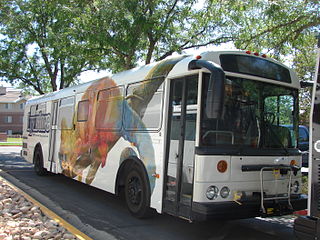
The Ryde is a bus service that provides transportation to the Brigham Young University (BYU) community in Provo, Utah, United States. The service is owned and operated by Student Movement, Inc. (SMI) and operates under the brand, "The Ryde". Although The Ryde began as a limited service paid shuttle bus, but the fall of 2015 it expanded to limited-service bus routes that are free to BYU students.












